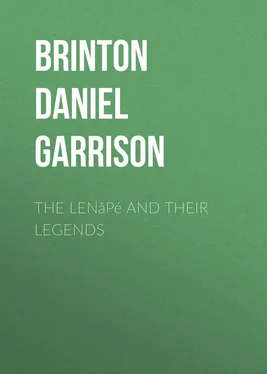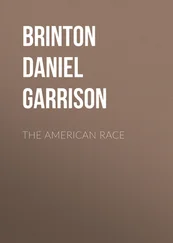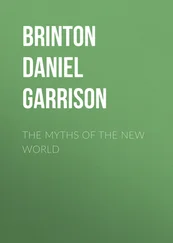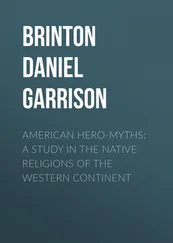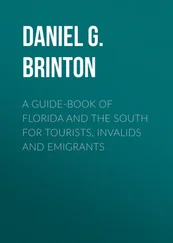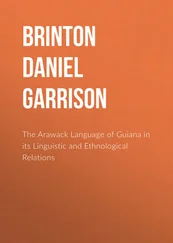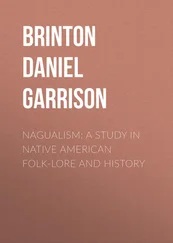Daniel Brinton - The Lenâpé and their Legends
Здесь есть возможность читать онлайн «Daniel Brinton - The Lenâpé and their Legends» — ознакомительный отрывок электронной книги совершенно бесплатно, а после прочтения отрывка купить полную версию. В некоторых случаях можно слушать аудио, скачать через торрент в формате fb2 и присутствует краткое содержание. Жанр: foreign_antique, foreign_prose, на английском языке. Описание произведения, (предисловие) а так же отзывы посетителей доступны на портале библиотеки ЛибКат.
- Название:The Lenâpé and their Legends
- Автор:
- Жанр:
- Год:неизвестен
- ISBN:нет данных
- Рейтинг книги:4 / 5. Голосов: 1
-
Избранное:Добавить в избранное
- Отзывы:
-
Ваша оценка:
- 80
- 1
- 2
- 3
- 4
- 5
The Lenâpé and their Legends: краткое содержание, описание и аннотация
Предлагаем к чтению аннотацию, описание, краткое содержание или предисловие (зависит от того, что написал сам автор книги «The Lenâpé and their Legends»). Если вы не нашли необходимую информацию о книге — напишите в комментариях, мы постараемся отыскать её.
The Lenâpé and their Legends — читать онлайн ознакомительный отрывок
Ниже представлен текст книги, разбитый по страницам. Система сохранения места последней прочитанной страницы, позволяет с удобством читать онлайн бесплатно книгу «The Lenâpé and their Legends», без необходимости каждый раз заново искать на чём Вы остановились. Поставьте закладку, и сможете в любой момент перейти на страницу, на которой закончили чтение.
Интервал:
Закладка:
When they removed from one place to another these bones were carried with them. Even those who migrated to northern Pennsylvania, about the middle of the last century, piously brought along these venerable relics, and finally interred them near the present site of Towanda, whence its name, Tawundeunk , "where we bury our dead." [25] Footnote_25_25 Charles Beatty, Journal of a Journey , etc., p. 87. Heckewelder, Indian Nations , pp. 90, et seq. Ibid. Trans. Am. Phil. Soc. , Vol. IV, p. 362.
Their dialect varied considerably from the Delaware; of which it is clearly a deteriorated form. It is characterized by abbreviated words and strongly expirated accents, as tah! quah! quak! su , short; quah! nah! qut , long.
Our knowledge of it is limited to a few vocabularies. The earliest was taken down by Captain John Smith, during his exploration of the Chesapeake. The most valuable is one obtained by Mr. William Vans Murray, in 1792, from the remnant in Maryland. It is in the library of the American Philosophical Society, and has never been correctly or completely printed.
The Nanticokes broke up early. Between the steady encroachments of the whites and the attacks of the Iroquois they found themselves between the upper and the nether millstones.
According to their own statement to Governor Evans, at a conference in 1707, they had at that time been tributary to the latter for twenty-seven years, i. e. , since 1680. Their last head chief, or "crowned king," Winicaco, died about 1720. A few years after this occurrence bands of them began to remove to Pennsylvania, and at the middle of the century were living at the mouth of the Juniata, under the immediate control of the Iroquois. Thence they removed to Wyoming, and in 1753, "in a fleet of twenty-five canoes," to the Iroquois lands in western New York. Others of their nation were brought there by the Iroquois in 1767; but by the close of the century only five families survived in that region. [26] Footnote_26_26 The authorities for these facts are Bozman, History of Maryland , Vol. I, pp. 175-180; Heckewelder, Indian Nations , pp. 93, sqq.; E. de Schweinitz, Life of Zeisberger , pp. 208, 322, etc.; the Treaty Records, and MSS. in the library of the American Philosophical Society. That the Nanticokes came from the South into Maryland has been maintained, on the ground that as late as 1770 they claimed land in North Carolina. New York Colonial Documents , Vol. VIII, p. 243. But the term "Carolina" was, I think, used erroneously in the document referred to, instead of Maryland, where at that date there were still many of the tribe.
A small band called the Wiwash remained on Goose creek, Dorchester county, Maryland, to the same date.
The fourth member of the Wapanachki was that nation variously called in the old records Conoys , Ganawese or Canaways , the proper form of which Mr. Heckewelder states to be Canai . [27] Footnote_27_27 History of the Indian Nations , Introduction, p. xlii.
Considerable obscurity has rested on the early location and affiliation of this people. Mr. Heckewelder vaguely places them "at a distance on the Potomac," and supposes them to have been the Kanawhas of West Virginia. [28] Footnote_28_28 Ibid., pp. 90-122.
This is a loose guess. They were, in fact, none other than the Piscataways of Southern Maryland, who occupied the area between Chesapeake Bay and the lower Potomac, about St. Mary's, and along the Piscataway creek and Patuxent river.
Proof of this is furnished by the speech of their venerable head chief, "Old Sack," at a conference in Philadelphia in 1743. [29] Footnote_29_29 Minutes of the Provincial Council of Penna. , Vol. IV, p. 657. Further proof of this in a Treaty of Peace concluded in 1682 by the New York colonial government, between the Senecas and Maryland Indians. In this instrument we find this tribe referred to as "the Canowes alias Piscatowayes," and elsewhere as the "Piscatoway of Cachnawayes." New York Colonial Documents , Vol. III, pp. 322, 323.
His words were: "Our forefathers came from Piscatua to an island in Potowmeck; and from thence down to Philadelphia, in old Proprietor Penn's time, to show their friendship to the Proprietor. After their return they brought down all their brothers from Potowmeck to Conejoholo, on the east side Sasquehannah, and built a town there."
This interesting identification shows that they were the people whom Captain John Smith found (1608) in numerous villages along the Patuxent and the left bank of the lower Potomac. The local names show them to have been of Algonkin stock and akin to the Nanticokes.
Conoy, Ganawese, Kanawha, are all various spellings of a derivative from an Algonkin root, meaning "it is long" (Del. guneu , long, Cree kinowaw , it is long,) and is found applied to various streams in Algonkin territory. [30] Footnote_30_30 I am aware that Mr. Johnston, deriving his information from Shawnee interpreters, translated the name Kanawha, as "having whirlpools." ( Trans. of the Amer. Antiq. Soc. , Vol. I, p. 297.) But I prefer the derivation given in the text.
Piscataway, or Pascatoway, as it is spelled in the early narratives, also recurs as a local name in various parts of the Northern States. It is from, the root pashk , which means to separate, to divide. Many derivatives from it are in use in the Delaware tongue. In the Cree we have the impersonal form, pakestikweyaw , or the active animate pasketiwa , in the sense of "the division or branch of a river." [31] Footnote_31_31 Lacombe, Dictionnaire de la Langue des Cris , s. v. In Delaware the root takes the form pach , from which are derived, by suffixes, the words pach-at , to split, pachgeechen , where the road branches off, pachshican , a knife = something that divides, etc.
The site of Kittamaquindi ( kittamaque-ink , Great Beaver Place,) the so-called "metropolis of Pascatoe," [32] Footnote_32_32 Relatio Itineris in Marylandiam , p. 63. (Edition of the Md. Hist. Soc. 1874.)
was where Tinker's creek and Piscataway creek branch off from their common estuary, about fifteen miles south of Washington city.
The "emperor" Chitomachen, Strong Bear ( chitani , strong, macha , bear), who bore the title Tayac (Nanticoke, tallak , head chief) ruled over a dominion which extended about 130 miles from east to west.
The district was thinly peopled. On the upper shores of the west side of the Chesapeake Captain John Smith and the other early explorers found scarcely any inhabitants. In 1631 Captain Henry Fleet estimated the total number of natives "in Potomack and places adjacent," at not over 5000 persons. [33] Footnote_33_33 See his Journal , published in Neill's Founders of Maryland (Albany, 1876). Fleet was a prisoner among the Pascatoways for five years, and served as an interpreter to Calvert's colony.
This included both sides of the river as high up as the Falls, and the shores of Chesapeake Bay.
Chitomachen, with his family, was converted to the Catholic faith in 1640, by the exertions of the Jesuit missionary, Father Andrew White, but died the year after. When the English first settled at St. Mary's, the tribe was deserting its ancient seats, through fear of the Susquehannocks, and diminished rapidly after that date.
Father White was among them from 1634 to 1642, and composed a grammar, dictionary and catechism of their tongue. Of these, the catechism is yet preserved in manuscript, in the library of the Domus Professa of the Jesuits, in Rome. It would be a great benefit to students of Algonkin dialects to have his linguistic works sought out and published. How far his knowledge of the language extended is uncertain. In a letter from one of the missionaries, dated 1642, who speaks of White, the writer adds: "The difficulty of the language is so great that none of us can yet converse with the Indians without an interpreter." [34] Footnote_34_34 Relatio Itineris in Marylandiam , p. 84. The Rev. Mr. Kampman, at one time Moravian missionary among the Delawares, told me that even with the modern aids of grammars, dictionaries and educated native instructors, it is considered to require five years to obtain a sufficient knowledge of their language to preach in it. The slowness of the early Maryland priests to master its intricacies, therefore, need not surprise us.
Интервал:
Закладка:
Похожие книги на «The Lenâpé and their Legends»
Представляем Вашему вниманию похожие книги на «The Lenâpé and their Legends» списком для выбора. Мы отобрали схожую по названию и смыслу литературу в надежде предоставить читателям больше вариантов отыскать новые, интересные, ещё непрочитанные произведения.
Обсуждение, отзывы о книге «The Lenâpé and their Legends» и просто собственные мнения читателей. Оставьте ваши комментарии, напишите, что Вы думаете о произведении, его смысле или главных героях. Укажите что конкретно понравилось, а что нет, и почему Вы так считаете.
